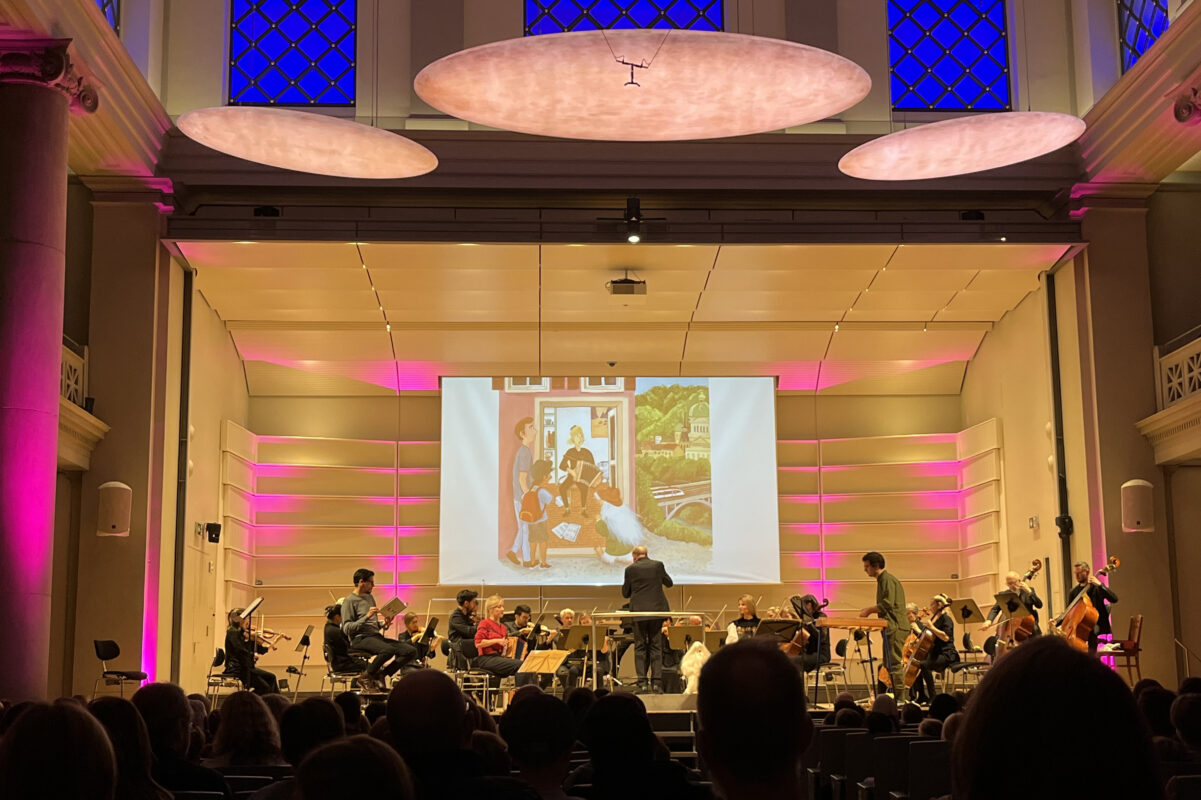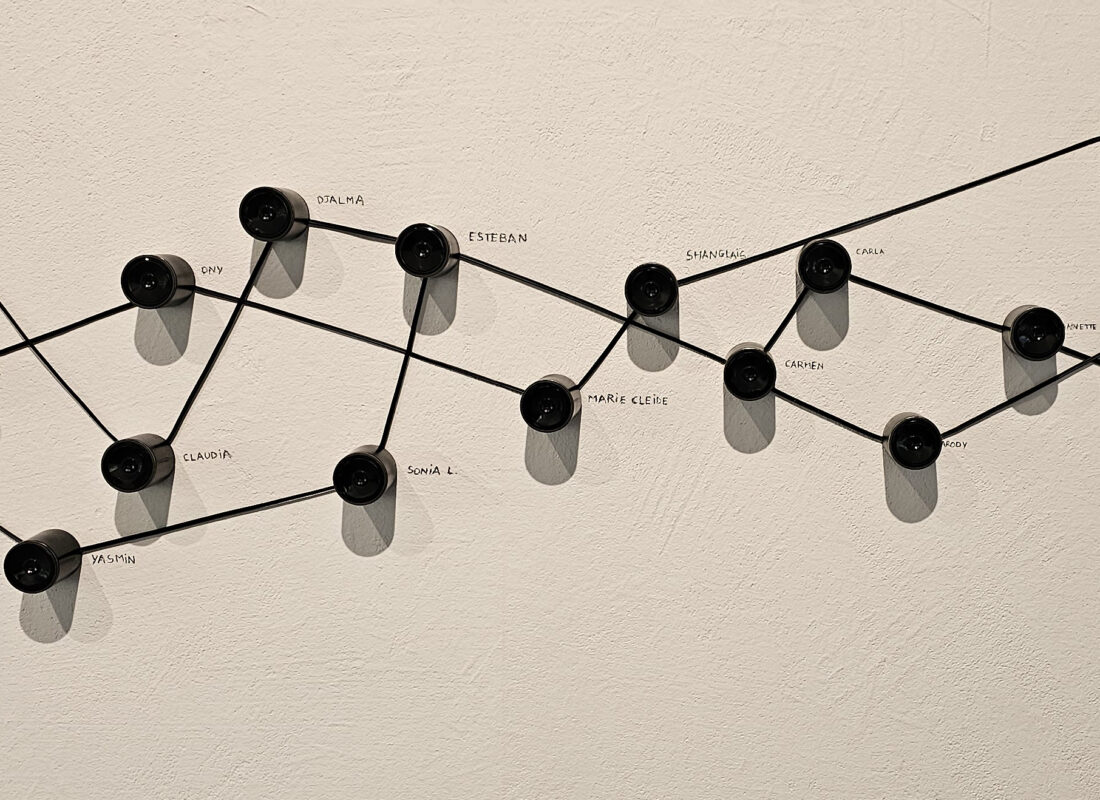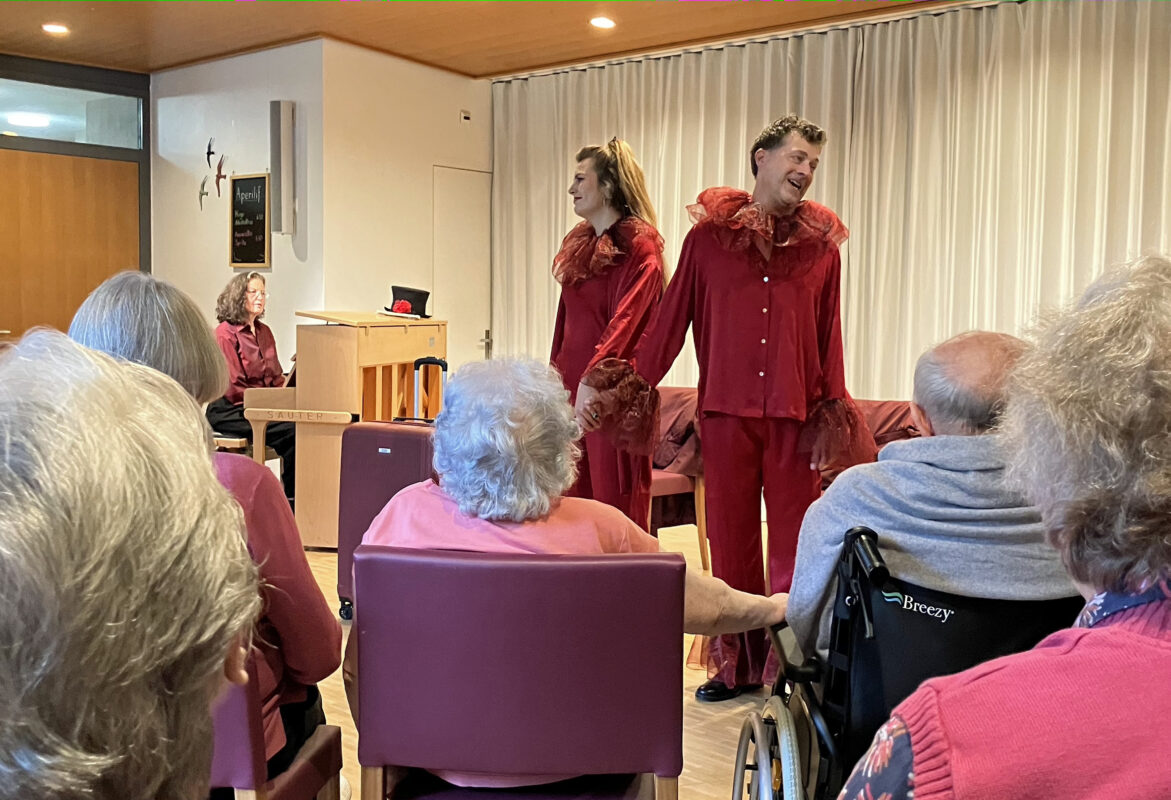Faith in a different world
The South African artist William Kentridge has created an impressive film to accompany Dmitri Shostakovich's 10th Symphony.
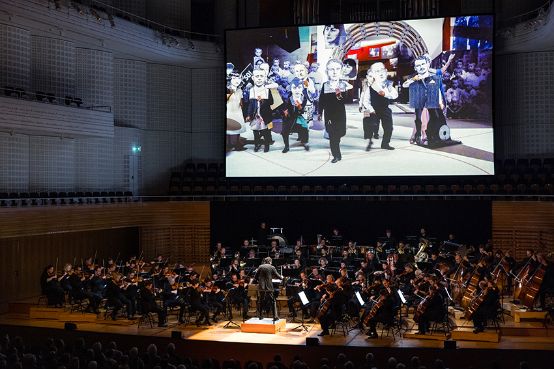
Despite some crises in the music business, at least one genre has been experiencing a striking crescendo for several decades: film music. Not only in the way it is viewed and evaluated (even by musicologists and new music), but also in the concert hall. The 21st Century Orchestra from Lucerne has done pioneering work in this country, accompanying recent films live since 1999 under the direction of Ludwig Wicki. Most orchestras have long since followed their example. And that's a good thing. Because this movement compensates for what cinemas no longer achieve since almost all Cinemascope auditoriums have been dismembered. The great experience of being surrounded by images and sound with eyes and ears wide open has been lost. This is how a genre is being recaptured.
But it can also be taken further, as the Lucerne Symphony Orchestra now shows. The result is a new, independent film set to vivid and emotionally intense music, which was by no means intended to accompany a film, by a composer who himself has a wealth of experience with film, gained over decades in a wide variety of genres. The South African artist William Kentridge, a master of many classes, and his team created the film Oh, to Believe in Another World to the 10th Symphony by Dmitri Shostakovich, who already accompanied silent films in Leningrad as a young pianist.
Feelings and passions
How should one illustrate this? The Tenth, composed in 1953 after Stalin's death, is regarded as a bitter portrait of the dictator, which is particularly true of the exaggerated second movement. According to conductor Michael Sanderling, the first movement depicts the state of society; in the third, the composer tells of himself. One may also recognize hope in the tragic beauty of the work. Shostakovich himself was rather vague about the specific content: "I wanted to express human feelings and passions in this work."
You could imagine this to be quite striking - or accompanied by old documentary footage. However, the starting point for Kentridge was not a plot, but rather the play with small cardboard figures acting in an "abandoned Soviet museum", which admittedly only exists in a cardboard format, as it was placed on the studio table. It was filmed with a miniature camera, in the style of an animated film. In addition, there were actors, some of whom recreated the play of figures in life-size: Shostakovich and his pupil Elmira Nasirova, the poet Vladimir Mayakovsky and his lover Lilia Brik as well as the three revolutionaries Lenin, Trotsky and Stalin. The film team developed the scenes for the music from the footage, although they do not follow any discernible chronology.
Departure and disillusionment
The 1920s - rather than the 1950s, when the symphony was composed - are the historical point of reference for Kentridge. And for an important reason: he did not want to show the depression that prevailed under Stalin, but rather the ambivalence of feelings in the face of the socialist awakening in the young Soviet Union and the disillusionment that soon followed. Emblematic of this is the figure of the poet Vladimir Mayakovsky, who accompanied the movement with enthusiastic, brash verses, but then committed suicide in 1930 in disappointment. Kentridge compiled a text from his poems and dramas, which appears in the picture and speaks in sentences of hope and disillusionment. The title also comes from this Oh, to Believe in Another World (Oh, if only I could believe in a different world).
However, the film also refers to the aesthetics of the 1920s, to expressive futurism and to the Russian silent films of the time. Several times one feels reminded of the fast and boldly edited film The new Babylon which Grigori Kozintsev and Leonid Trauberg shot in 1929 and for which Shostakovich wrote a fantastic score. The sometimes unstable changing colors, the scratched surfaces and the slightly shaky titles also refer to the film quality of the time. Numerous documentary shots are inserted between the images. The result is a grandiose arc of images, a kaleidoscopic ballet of figures. Kentridge says that he did not want to degrade the symphony to film music, but the image becomes almost overpowering due to the many rapidly changing visual events. It is therefore a good thing that the emotions of the image hardly attempt to compete with those of the music. A plot is only hinted at. It is convincing, for example, that the portrait of Stalin is omitted from the second movement. We see propaganda footage of the time (also with the young Shostakovich), but these appear to be distanced by a stage effect. Kentridge also said that he wanted to ask questions with his film. However, the way the third movement is visualized is problematic. The composer portrays himself with his tone letters (D-S-C-H). Kentridge brings a supposed love story with Nasirova into focus, discreetly, but unnecessarily, because it trivializes the situation.
The score itself remained largely untouched. Only the fact that the orchestra and the conductor are forced to work to a certain tempo because the film has been completed may be seen as a limitation. However, this is more likely to affect future performers. The Lucerne Symphony Orchestra under its conductor Michael Sanderling took on this challenge in mid-June at the Culture and Convention Center Lucerne (KKL) with enormous verve, i.e. with energy and passion.
Incidentally, the last few images of the movie show a kind of satyr dance of all the characters (including the dictators), as if it goes on forever. They dance, as the text says, over what is left of Europe. This has suddenly become depressingly topical again.
-
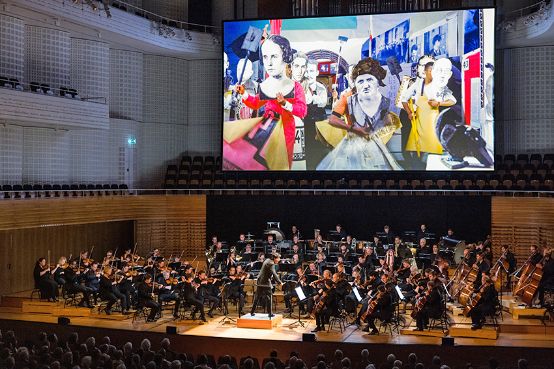
World premiere of the film "Oh, to Believe in Another World" to Dmitri Shostakovich's 10th Symphony. Photo: Philipp Schmidli/Lucerne Symphony Orchestra






